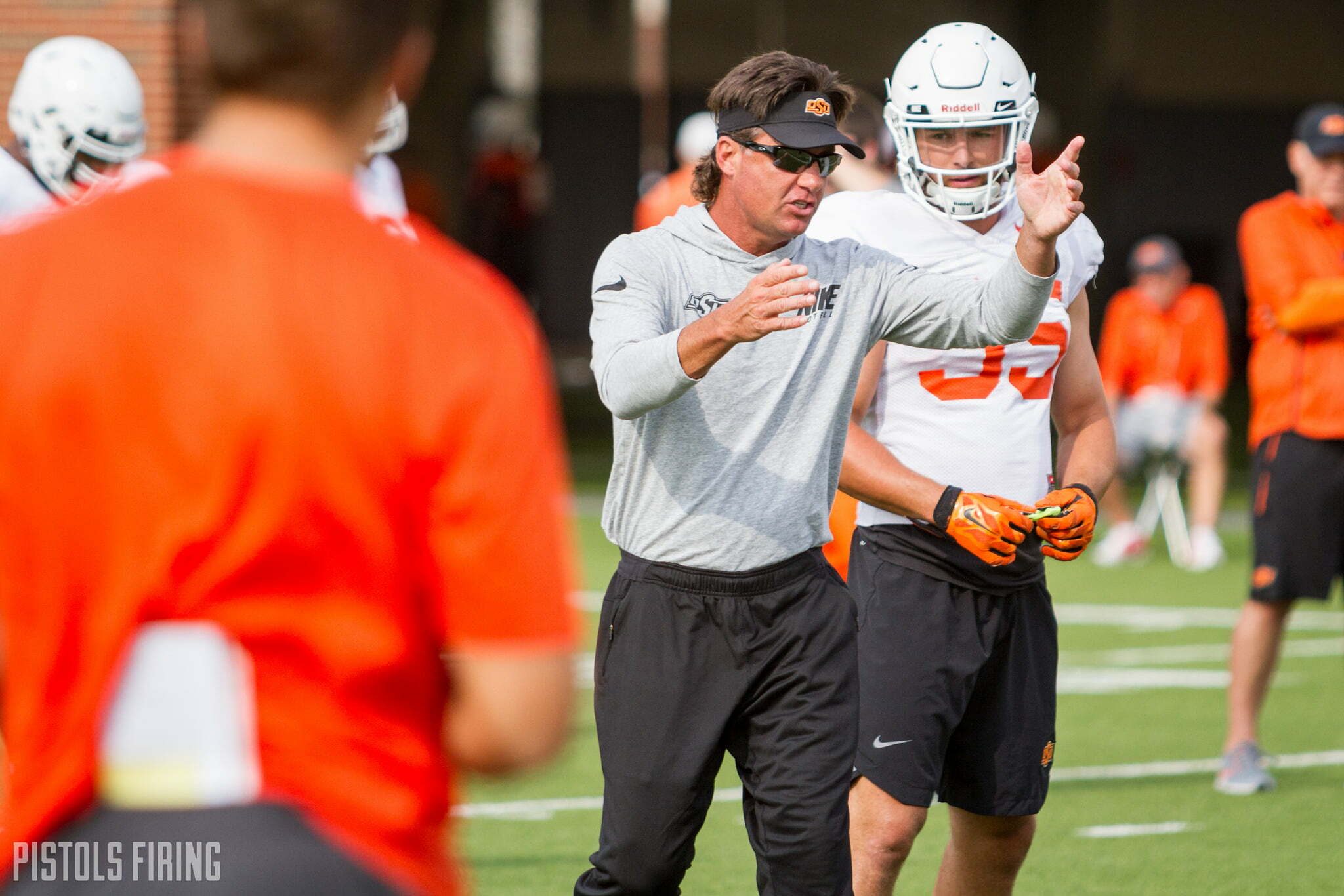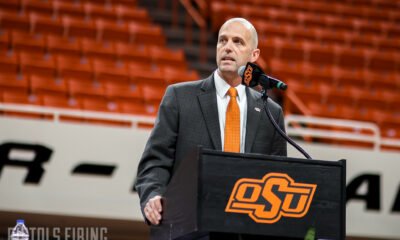Football
OSU’s Blue-Chip Ratio Suggests It Can’t Compete for Titles
What recent history has to say about recruiting rankings and what they mean for OSU.

Last summer, SBNation’s national recruiting director Bud Elliot wrote a piece discussing college football’s blue-chip ratio. Here’s a brief definition of from Elliot.
“Quite simply, it’s the recruiting standard needed to win the college football national championship. Reviewing years of recruiting data, and giving weight to more recent years with standardized recruiting rankings, I’ve determined that in order to win the title, teams need to sign more four- and five-star recruits (“blue-chips”) than two- and three-stars over a four-year period.
The ratio is a representation of that. What percentage of your last four classes has been made up of blue-chips? The data overwhelmingly shows that champions eclipse the 50 percent standard.” [SBNation]
To calculate the ratio, Elliot explains that he uses 247Sports composite ranking and he doesn’t include transfers and walk-ons.
“Transfers are not governed by recruit rules, are not rated and, though they’re important to every team, are rarely consequential enough to turn a non-contender into a contender. Walk-ons are almost never rated. Sticking with signees helps to standardize the process.” [SBNation]
Elliot then backs up his claim by reviewing the recent national champions blue-chip ratios:
• 2017 Alabama — 80 percent
• 2016 Clemson — 52 percent
• 2015 Ohio State — 68 percent
• 2014 Ohio State — 68 percent
• 2013 Florida State — 53 percent
• 2012 Alabama — 71 percent
Last year’s national champ Clemson had a ratio of 61 percent, one of only 13 teams prior to the start of the 2018 season who had a blue-chip ratio above the 50 percent mark. Oklahoma and Texas are the only two Big 12 schools who made the list.
If you follow Oklahoma State recruiting, you already know that the Cowboys haven’t been close to cracking the 50 percent threshold and only signed three blue-chip recruits in this past recruiting cycle. So, according to Elliot, this means they aren’t in contention for a national title any time soon, but do the Pokes recruit well enough to continue winning and possibly win more Big 12 Championship?
I personally think the answer to this question is yes. Although some people disagree with his approach, Gundy and his staff do a good job of evaluating talent and finding players that have slipped through the cracks. For example, James Washington was a three-star prospect according to the 247Sports composite.
Washington didn’t hold any major offers until after he committed to Oklahoma State the summer leading into his senior year of high school. As you know, this “diamond in the rough” prospect went on the win the Biletnikoff Award and is currently playing for the Pittsburgh Steelers.
Justice Hill was another recent three-star prospect who wrapped up his career in Stillwater as one of the most talented backs in Oklahoma State history.
The Oklahoma product’s offer list was made up of schools like Houston, Kansas and Louisville.
On the defensive side of the ball, a guy like Tre Flowers had a solid college career for the Pokes and is currently seeing a lot of playing time with the Seattle Seahawks.
There are some guys on the team currently, such as Thomas Harper, who might be another under-the-radar recruit to do great things in a Cowboy uniform.
Now, on the other side of the argument, you have guys like Dez Bryant, Joseph Randle, Marcell Ateman, Mason Rudolph and Perrish Cox, who are all blue-chip recruits who performed very well in Stillwater.
If the Cowboys continue to recruit how they did in 2019, and possibly improve slightly above this in some years, I believe they can compete for and win Big 12 titles on a consistent basis. My reasoning for this is that coaching and player development are huge keys, along with recruiting, in having success at the college football level. I think Gundy and company have continually shown they are capable developers, as evidenced by the players I mentioned above. Gundy has shown he is willing to make coaching changes when necessary by bringing in innovative minds like Sean Gleeson and new schemes like with Jim Knowles.
Now, my opinion is biased as I don’t love recruiting rankings. I just think it’s impossible for all of these analysts to correctly evaluate every high school athlete in the country, and I trust the analysis skills of this OSU coaching staff. Although, I do admit there is some truth to the blue-chip ratio. I mean all you have to do is read Elliot’s article as he backs it up with facts from recent national champions.
For more on this topic, the Tape Doesn’t Lie Podcast did a great job of breaking down OSU’s recruiting strategy a couple of months ago, and they discussed how the Cowboys are having success. If you haven’t you should give it a listen.

-

 Football5 days ago
Football5 days agoFour-Star Wide Receiver Jaden Perez Commits to Oklahoma State
-

 Football2 days ago
Football2 days agoFour-Star Quarterback Adam Schobel Commits to Oklahoma State, Flips from Baylor
-

 Wrestling5 days ago
Wrestling5 days agoOSU Wrestling: Olympic Chances End for Cowboy Hopefuls
-

 Hoops2 days ago
Hoops2 days ago‘Keep Turning Over the Rocks’: Looking at the Portal Landscape as Lutz Looks to Solidify His First OSU Roster






